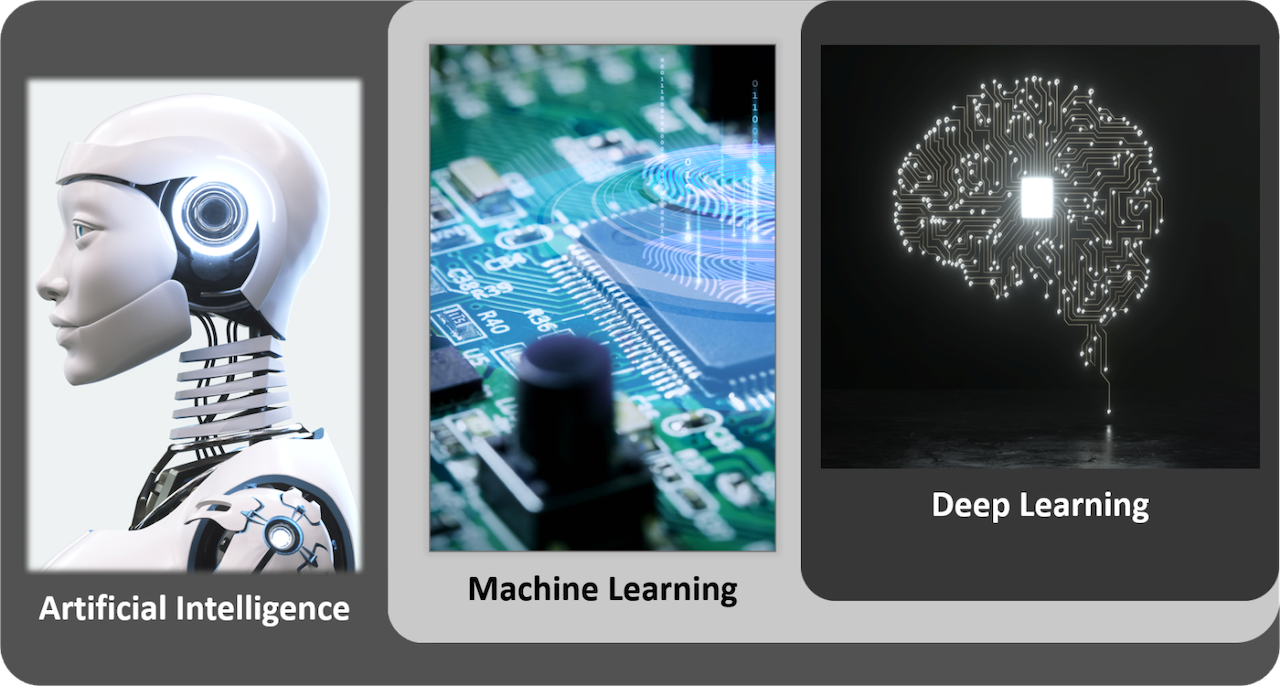
The Advent of AI in the Transportation Industry
Written by Rahul Jalali, Union Pacific Executive Vice President & Chief Information Officer
The transportation industry has come a long way in the past few decades, and with the recent large leap forward in technologies such as Artificial Intelligence (AI) and Machine Learning (ML), the industry is on the brink of a major transformation. We are at an inflection point where the investments in AI are set to revolutionize most aspects of humanity and certainly our transportation industry.
What is AI and ML? Artificial Intelligence is the concept of creating smart intelligent machines that simulate human intelligence. Machine Learning is a subset of artificial intelligence that helps you build AI-driven applications using vast volumes of data and complex algorithms to train a model. Deep Learning is a subset of machine learning that leverages our understanding of neural networks as they work in the human brain to enable smarter results and better decisions. Another popular team is Generative AI, which is a type of artificial intelligence system capable of generating text, images or other media in response to prompts.

A great example of an AI technology top of mind for many people and businesses is ChatGPT – a Generative AI chatbot created by OpenAI based on a Large Language Model (LLM) designed to simulate human-like conversation. This architecture has been trained on massive datasets of human language and continues to rapidly evolve. ChatGPT represents a giant leap in generative AI that has essentially had the effect of democratizing AI because it can be easily used by people in non-technical professions.
ChatGPT can aid in quickly writing emails and articles, help produce enhanced marketing material, summarize survey response data for better human decisions, and assist with writing code, amongst other capabilities. These are all examples where AI can help us make better decisions. For example, Microsoft is investing heavily in a product called Copilot, which is a generative AI solution based on OpenAI’s ChatGPT and embedded into Office 365. It will unlock significant productivity gains and enable ease of use for millions of users worldwide.
A primary application of AI in general (and ChatGPT in particular) in the transportation industry is in sales and customer service functions. With the help of ChatGPT, transportation companies can provide their customers with personalized and responsive service. Our employees can answer customer queries with disparate data pulled for them into one place in real-time, such as providing information on exceptions, schedules, price and routes. AI can help humans take Customer Experience to the next level!
Another important AI application for the transportation industry is in logistics and supply chain management. Leveraging AI in their technology solutions, transportation companies can optimize their supply chain operations and improve efficiency. It can also be used to help predict demand, optimize routes and even predict maintenance requirements, allowing us to have a wealth of data at our fingertips and making us more predictive.
In addition, AI can be used to enhance safety and security in the transportation industry. It can be used to monitor traffic patterns, assist with identifying potential hazards and help detect suspicious activity. This enables transportation companies to take proactive measures and ensure the safety of their freight or passengers and assets.
So, what’s next? How do we get onboard with AI and the radical change that it introduces?
We need to take a responsible approach to ensure there is minimum bias in the AI we are implementing. Much will be determined in the coming years by way of government and industry regulation, but we can start by building responsible AI by design – solutions that are safe, trustworthy, ethical and transparent. We will use Large Language Models (LLMs), which are essentially black boxes, to protect intellectual property. We will send in data; it does what it does; and the output belongs to us.
You may say this is all good if we are building the AI solutions ourselves, but we are moving toward a world where we prefer to buy solutions rather than build them. Are SaaS (Software as a Service) products evolving to incorporate the most recent advances in AI? The answer is a resounding Yes! Companies such as Salesforce and SAP are working hard to integrate this mindset into their products.
Where is Union Pacific going with AI and what should our AI posture be in the transportation industry? Let me sum that up in these two key points:
- “Augmenting human capabilities with machine intelligence” – We will leverage AI to run predictive and streamlined operations, prepare for business growth, and drive us toward a customer-centric future. AI should be used to aid humans in making decisions that provide better customer service – such as functions in Marketing and Sales – or optimization of operations out in the field.
- Specifically, we need to look at augmenting Digital Transformation efforts with Data Science, Operations Research and Simulation practices to improve operations through technology innovation that drives competitive advantage.
Ultimately, AI will empower our teams to make better and smarter decisions thereby making us more efficient and productive and creating opportunities for growth.
Editor’s Note: Rahul Jalali was named a Railway Age Influentials Honoree in 2022. To read more about him, click here.



